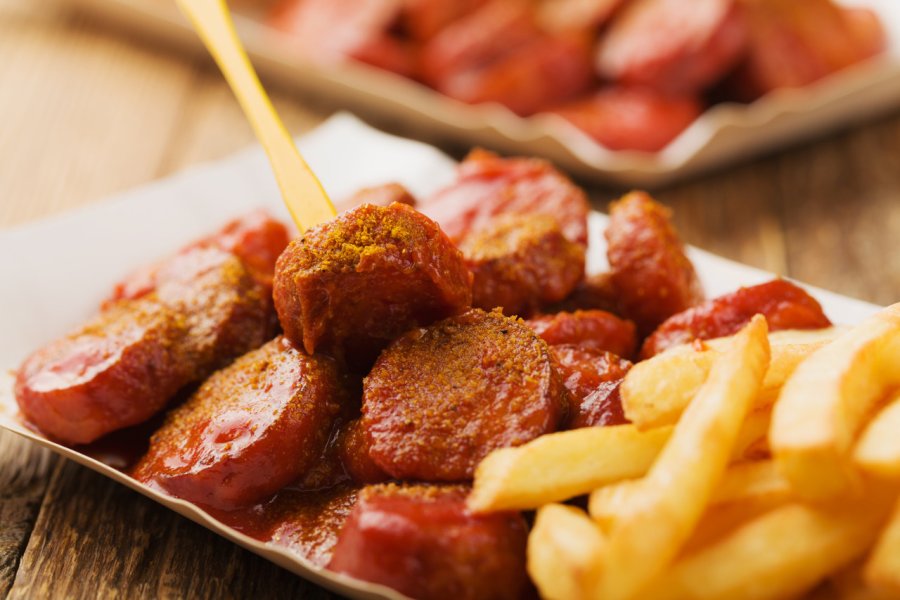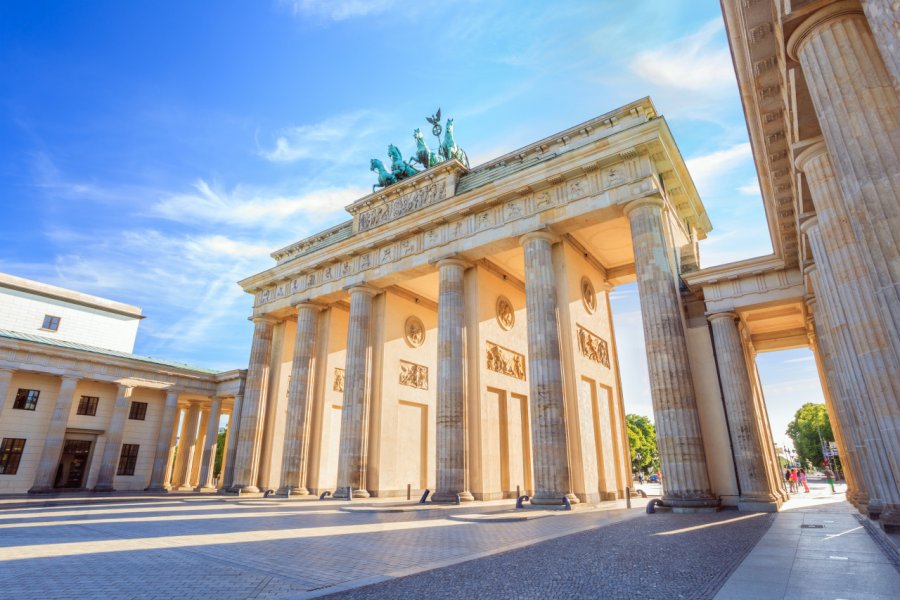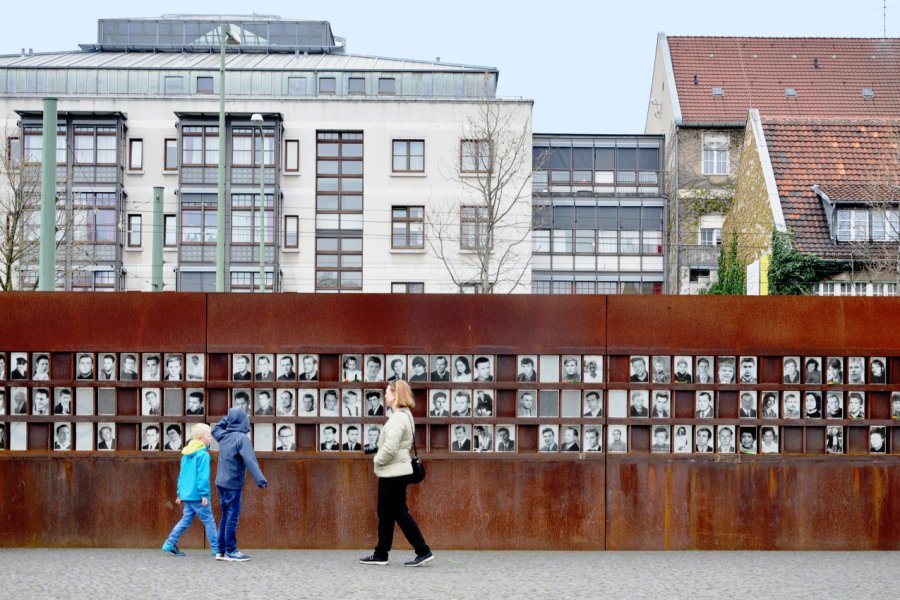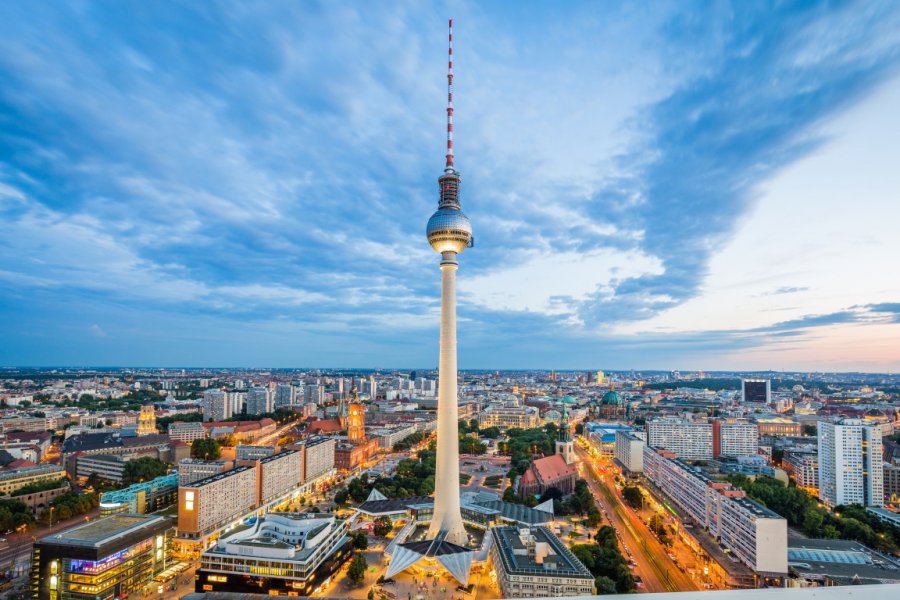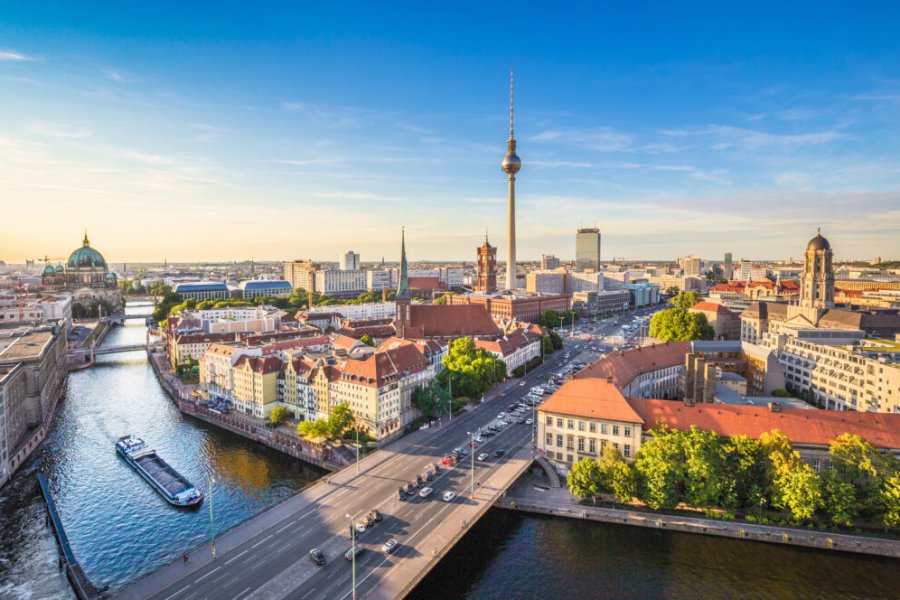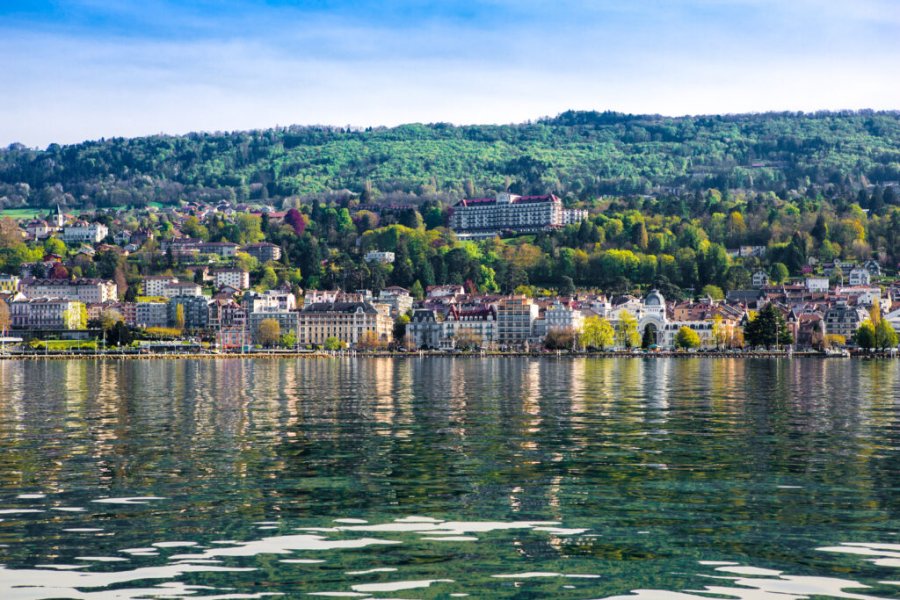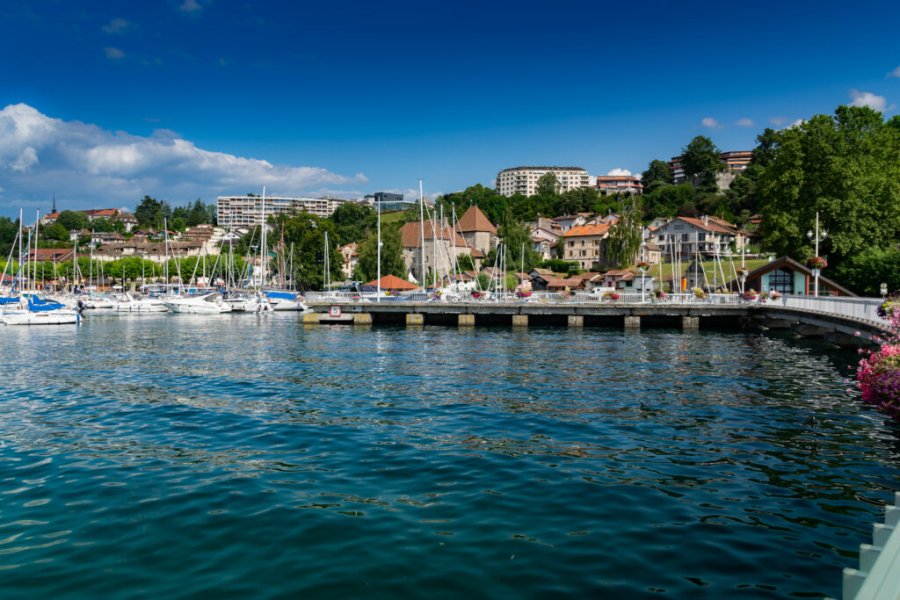Hitler Year and War
Highlights of the trip
During your stay you can enjoy the following highlights: Culture / Heritage.
Best times to go
The best time(s) to go is/are : Printemps, Eté.
Petit Futé
Where to stay in : Berlin ?
The map of your stay "Hitler Year and War"
Detail of the stay : Hitler Year and War
How to get there
The Hitler years

Steps: Berlin
Start your visit on the Bebelplatz (near Unter den Linden) where the Autodafé memorial is located, a glass plate placed among the paving stones of the square, reminiscent of the place where, in 1933, the Nazis burned books by Jewish authors or those considered depraved. Then head for the Reichstag, on Republic Square (Platz der Republik), the seat of Parliament that was partially burned down on 27 February 1933 by far-right militants. It has since been rebuilt and it is possible to visit its magnificent glass dome for free. Then go to the Brandenburg Gate, where Karl Friedrich Schinkel's famous quadrige, led by the Victory, initially turned towards the city, is located as a sign of peace. Hitler had it moved outwards to signify his conquests. Next to the Brandenburg Gate, under the Holocaust Memorial, was Hitler's bunker (where he allegedly committed suicide). Contrary to popular rumours, Hitler's bunker was blown up in 1947; the entrances were blocked with concrete reinforcement, so you can no longer see anything there and the site cannot be visited. Continue on rue du 17-Juin, towards the Siegessäule. This column, originally located on the Königsplatz, opposite the Reichstag - and symbolizing the various victories of the Prussian Empire - was moved to its present location in 1938 by Hitler. Its purpose was to install it on a very busy axis (between Unter den Linden and the Exhibition Centre) in order to assert Germany's triumph. Finally, push further west to the Olympiastadion and Waldbühne, built under Hitler and reflecting Nazi architecture and excess. It was in this stadium that the 1936 Olympic Games were held.
Places of interest : BRANDENBURGER TOR - PORTE DE BRANDEBOURG BEBELPLATZ SIEGESSÄULE - COLONNE DE LA VICTOIRE REICHSTAG OLYMPIASTADION - STADE OLYMPIQUE
The war

Steps: Berlin
The visit begins on Unter den Linden, at Schinkel's Neue Wache, today a memorial for the victims of war and tyranny. The next stop is at Stresemannstraße 110, where the permanent exhibition "Topography of Terrors" on repression in Germany is housed in the former Gestapo annex building. Continue to Potsdamer Platz via the Stiftung Denkmal für die ermordeten Juden Europas (memorial in honour of the murdered Jews of Europe) and visit the German Resistance Memorial (Gedenkstätte Deutscher Widerstand) on Stauffenbergstraße, Nos. 13-14 (next to the Kulturforum). There is also a memorial to the failed attack on Hitler (in the courtyard) and a permanent exhibition on German resistance to the Nazi regime (on the 2nd floor). Finally, we go to the (Kaiser-Wilhlem-Gedächtniskirche) on Breitscheidplatz (U-Bahn Zoologischer Garten or Kurfürstendamm). Built in memory of the founder of the German Empire, it was half destroyed by bombing in 1943. It now serves as a memorial to the war. From here, head to Tegel airport to visit the Plötzensee memorial. It is located in the Hüttigpfad. It is a former prison where hundreds of political opponents and resistance fighters were tortured and executed between 1933 and 1945. There are good explanatory leaflets in several languages on site.
Places of interest : KAISER-WILHELM-GEDÄCHTNIS-KIRCHE NEUE WACHE TOPOGRAPHIE DES TERRORS MÉMORIAL DE LA RÉSISTANCE ALLEMANDE HOLOCAUST-MAHNMAL MEMORIAL DE PLÖTZENSEE POTSDAMER PLATZ
War (bis)
Steps: Berlin
Get to Wannsee with the S 1. Visit on Grossen Wannsee 56-58 (take bus # 114 to at the exit of the S-Bahn). This was where the conference of 20 January 1942 on the final solution took place. Free admission. Prendez the S-Bahn S 7 to visit Potsdam, to visit the Mémorial 54 memorial, which is located at 54-55 de la Lindenstraße in the Potsdam-Museum. Once a prison for political opponents during the Nazi period, there is now a documentation centre on political justice in Potsdam. Take advantage of the former KGB prison on the Friedricht-Ebert-Straße 53 in Potsdam.
Places of interest : HAUS DER WANNSEE-KONFERENZ
War (ter)

A visit to the Sachsenhausen Memorial in Oranienburg on the Rue des Nations is a harrowing experience (sensitive souls abstain). To get there, take the S 1 towards Oranienburg and walk a few minutes. This concentration camp dating back to 1936 will serve as a model for the other Nazi camps. It was in operation until 1945; more than 200 000 victims from across Europe were deported. Sachsenhausen then became a camp of internment under Soviet occupation.

